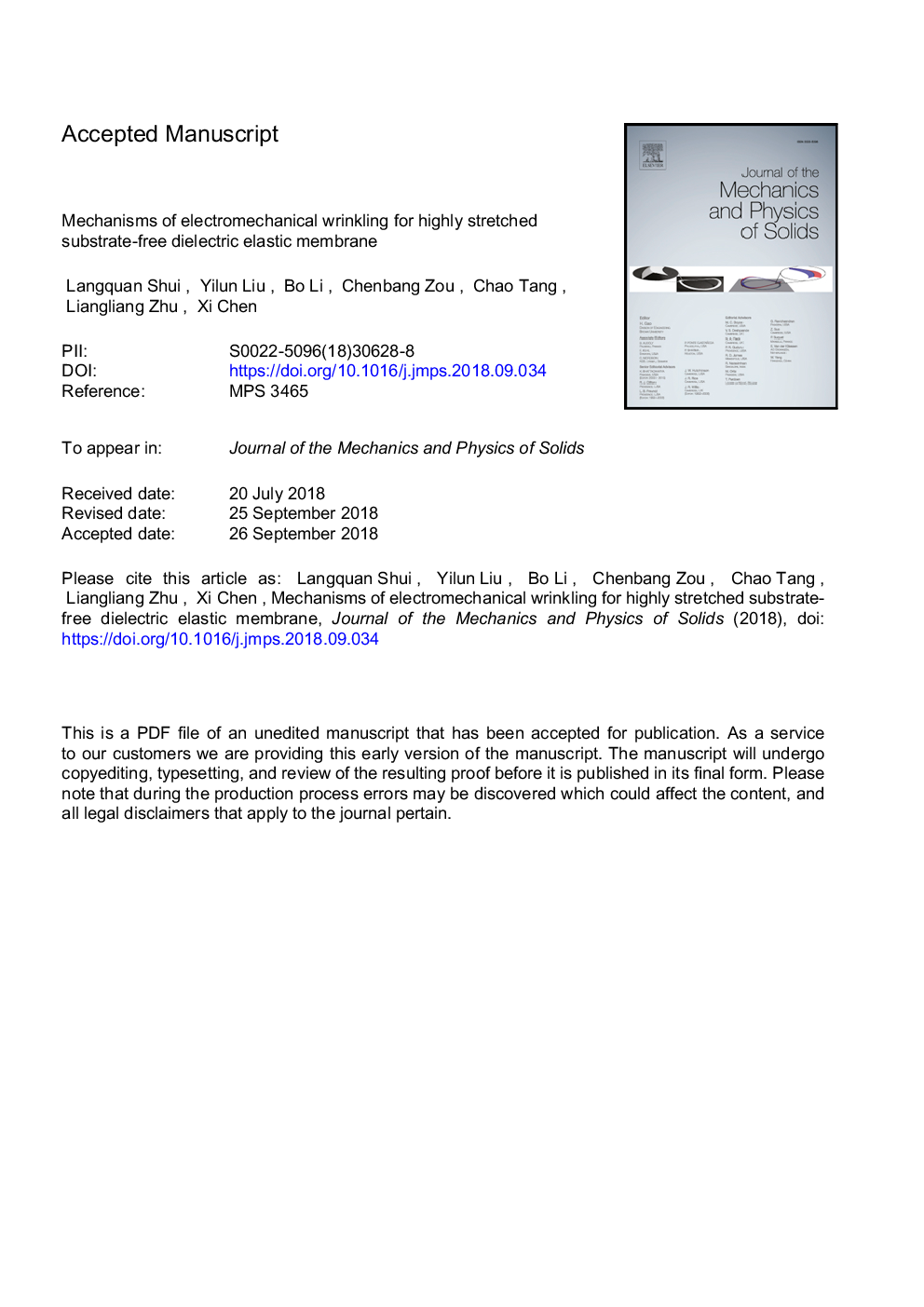| Article ID | Journal | Published Year | Pages | File Type |
|---|---|---|---|---|
| 11027797 | Journal of the Mechanics and Physics of Solids | 2019 | 25 Pages |
Abstract
In this work, the electromechanical wrinkling of a highly stretched substrate-free dielectric elastic membrane is theoretically and experimentally studied. Considering the hyperelasticity, anisotropy of the bending stiffness, and electromechanical coupled deformation of the dielectric elastic membrane, a general theoretical model for the wrinkling of a pre-stretched substrate-free membrane is developed. The theoretical model analytically predicts the critical voltage and wavelength of the membrane at the onset of its buckling, which agrees well with the experimental and simulation results. In the post buckling stage, based on Föppl-von Karman stain, the buckling amplitude is analytically derived and coincides with the experiments and simulations as well. The effects of pre-stretching ratio, membrane geometry, electrode thickness, and material property on the critical wrinkle voltage, wrinkle wavelength and electrical breakdown are discussed systematically, based on which a full deformation diagram of the substrate-free membrane under voltage is given. Compared to previous works that interpreted membrane wrinkling simply by the direction change of principle stress (from positive to negative), this work takes a significant step forward to develop theoretical models that can analytically and quantitatively predict the wrinkling wavelength, post-buckling amplitude, and critical wrinkling voltage of the substrate-free membrane. The results herein shed useful insights for the regulation and control of membrane wrinkling which holds potential applications in intelligent structures and devices.
Related Topics
Physical Sciences and Engineering
Engineering
Mechanical Engineering
Authors
Shui Langquan, Liu Yilun, Li Bo, Zou Chenbang, Tang Chao, Zhu Liangliang, Chen Xi,
